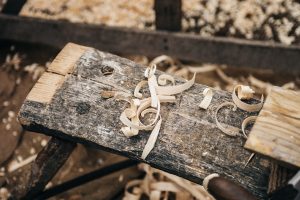Grading Lumber
Lumber from a lumber yard is graded on its quality and appearance. The type of wood and the number of defects have an effect on the overall quality.
Lumber Defects
Although some people like the unique character certain defects can add to wood, for structural integrity, defects should be kept to a minimum. Other than naturally occurring knots, most flaws are due to problems with cutting, stacking or drying wood. Defects include:
- Bow
- Wane
- Check
- Twist
- Split
- Knot
- Cup
- Crook
- Shake
Lumber Grades
Wood from a lumber yard is graded according to the U.S. Department of Commerce and the American Lumber Standards Committee.
- Select Structural: This is the highest grade of lumber; therefore, it will have the least number of defects. This timber is used for its strength and durability. Few if any knots are allowed.
- No. 1: Only a step below Select Structural grade, No. 1 lumber allows for very few defects. Knots are only permitted if they are tight and well-spaced.
- No. 2: This grade is most commonly used for framing. Few defects are allowed, but knots are allowed as long as they are well-spaced and don’t exceed size regulations.
- Construction Grade: This grade is used for light framing. Knots must be sound, encased, tight and firm.
- No. 3: More defects are permitted as long as they don’t go all the way through the wood. Well-spaced knots of any quality are allowed.
- Stud Grade: The stiffness and strength of this grade make it suitable to use as studs. The quality varies within this grade depending on appearance.
- Standard Grade: This grade is used for light framing projects. Knots don’t affect the quality.
- Utility Grade: This is the lowest grade a lumber yard sells. It can be used for light framing. Compared to other grades, there are few defect restrictions.
The grade of lumber determines what it might be used for. Grades are based on the quality of the wood and presence of defects.

